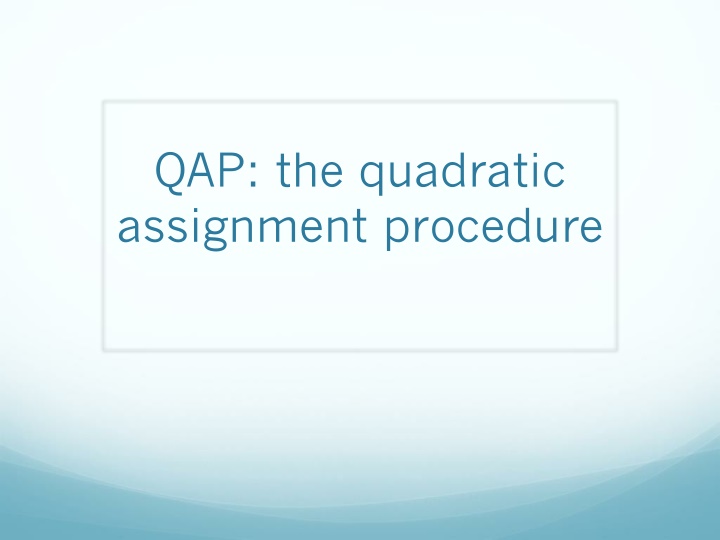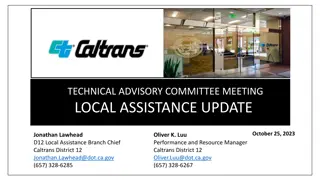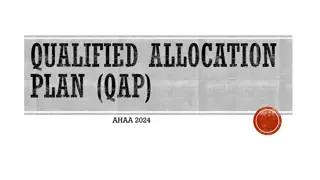
QAP and Its Application in Data Analysis
Explore the Quadratic Assignment Procedure (QAP) and how it evaluates the correspondence of cells in relational matrices, allowing for correlation analysis between different datasets in anthropology and social sciences. Learn how QAP can be used to assess relationships between observed and expected data, perform permutation tests, and more.
Download Presentation

Please find below an Image/Link to download the presentation.
The content on the website is provided AS IS for your information and personal use only. It may not be sold, licensed, or shared on other websites without obtaining consent from the author. If you encounter any issues during the download, it is possible that the publisher has removed the file from their server.
You are allowed to download the files provided on this website for personal or commercial use, subject to the condition that they are used lawfully. All files are the property of their respective owners.
The content on the website is provided AS IS for your information and personal use only. It may not be sold, licensed, or shared on other websites without obtaining consent from the author.
E N D
Presentation Transcript
QAP: the quadratic assignment procedure
Material on QAP is in the Anthropac Reference Manual: Borgatti, Stephen 1996. Anthropac 4. Reference Manual. Pp. 85-89 QAP evaluates the correspondence of cells in relational matrices The matrices may both be observed or one may be observed and the other expected that is the result of theory or prior experience.
If you expect that children will form play groups of the same sex, then you would compare an observed child-by-child play interaction matrix to a matrix that indicates whether a pair of children is the same sex or not.
QAP is a permutation method for correlating whole proximity matrices. The implementation of QAP in Anthropac lets you correlate matrices or use one matrix as a dependent variable and the other(s) as independent variable(s) in a regression.
If you have profile data on a set of people and you also have relational data, you can transform the profile data into a similarity matrix. Then you can use QAP to see if, say, attitudes, are correlated with social relations.
You can convert a single vector to a relational matrix using DATA>TRANSFORM>MAT>VEC
QAP calculates the Pearsons correlation between corresponding cells of the two matrices. It randomly permutes the rows and columns of one of the matrices and recalculates the correlation 1000+ times.
QAP produces a statistic, gamma, a measure of similarity for each permutation of the observed matrix. It also tells you the proportion of permutation gammas that were as large or larger than the observed gamma. This proportion is equivalent to the probability of achieving an observed correlation by chance.
Read this as a test of the null hypothesis: there is no relationship between the data and the model. A low proportion means the matrices are similar and that the similarity is unlikely to have occurred by chance. Borgatti, Stephen 1996. Anthropac 4. Reference Manual. Pp. 85-89




